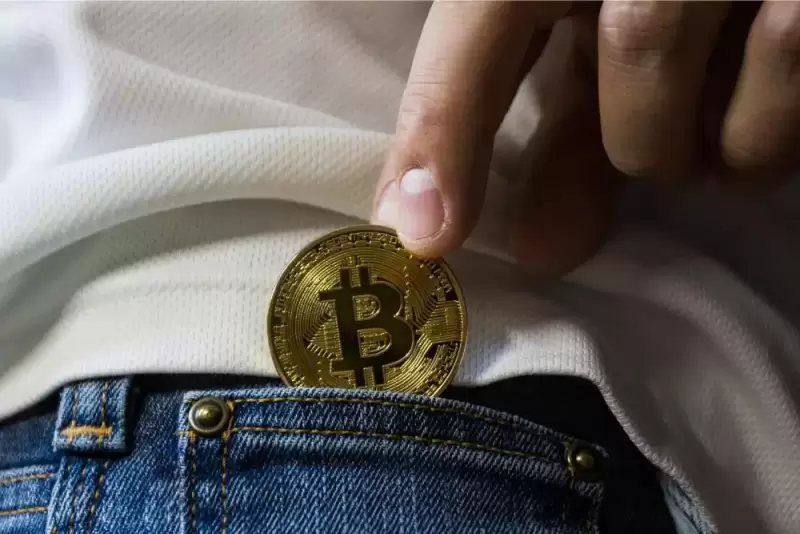 |
|
 |
|
 |
|
 |
|
 |
|
 |
|
 |
|
 |
|
 |
|
 |
|
 |
|
 |
|
 |
|
 |
|
 |
|
Cryptocurrency News Articles
From Ban to Adoption: Bolivia's Cryptocurrency Policy Evolution
Mar 31, 2025 at 06:17 pm
This article explains the journey from Bolivia's strict cryptocurrency ban to its adoption of regulated digital assets.
The Bolivian financial system has traditionally been characterized by strict monetary controls, with the Banco Central de Bolivia (BCB), the central bank, enforcing stringent regulations to prevent financial instability. This cautious approach led to Bolivia standing out in Latin America as one of the few nations with an outright ban on cryptocurrency usage.
However, the burgeoning adoption of digital currencies within the region, notably in Argentina, Brazil and El Salvador, pressured Bolivian authorities to reconsider their stance on crypto adoption.
This article provides an overview of the journey from Bolivia’s strict cryptocurrency ban to its adoption of regulated digital assets. It explains the historical context of the 2014 ban, the reasons behind it, and how global trends, economic pressures and technological advancements led to the 2024 shift in policy.
Bolivia lifts crypto ban: What led to the policy shift?
By June 2024, the Bolivia crypto ban was withdrawn, a move that was surprising to many but signaled a significant regulatory shift. The BCB announced this policy change in Board Resolution N°082/2024, which also stipulated that cryptocurrency transactions would be allowed only through authorized electronic means and in accordance with applicable legislation and regulations.
This policy change was driven by multiple factors:
With these changes, Bolivia’s digital currency policy has entered a new phase, allowing controlled access to cryptocurrencies within a framework of governmental oversight.
The Bolivian government’s calculus appears to be shifting in response to both internal and external pressures, setting the stage for an interesting chapter in the country’s financial history.
Bolivia’s crypto policy evolution, explained
The evolution of Bolivia’s cryptocurrency policy was influenced by several factors, including economic necessity, technological progress and regional regulatory trends. The following sections provide a closer look at the historical context, major policy shifts and the implications of these changes.
Historical context: The 2014 ban
In 2014, the Bolivian cryptocurrency laws explicitly prohibited the use of any digital asset not issued by the Bolivian government. The BCB justified this decision by stating that cryptocurrencies posed risks to financial stability, consumer protection and the macroeconomic framework.
At the time, Bolivia’s approach to crypto regulation was among the strictest in the world, differentiating it from other Latin American nations, where regulatory uncertainty was more common than outright bans.
Mid-period adjustments: 2020-2022 restrictions
Despite the Bolivia crypto ban, public interest in digital assets and global developments led to a partial policy shift in 2020. The BCB issued Resolution No. 104, which limited the scope of the cryptocurrency ban by focusing on instruments not authorized for payment services.
This signaled a move towards acknowledging the potential of digital assets while remaining cautious about their integration into the existing financial system.
The BCB also issued a statement warning institutions against offering financial services with cryptocurrency without the necessary authorization, further indicating the government's vigilance in monitoring and controlling any attempt to use cryptocurrencies for purposes that fell outside of the legal framework.
This period also saw a crackdown on pyramid schemes, which was covered in Law No. 597 on Multilevel Marketing. The law aimed to prevent scams and protect consumers, highlighting the government's priority to maintain financial stability and consumer confidence.
Turning point: Lifting the ban in 2024
By mid-2024, Bolivia made a surprising reversal. The Bolivia crypto legalization effort was formalized with the Board Resolution N°082/2024, which repealed the previous bans and allowed cryptocurrency transactions under regulated conditions.
The resolution, which came into effect on June 18, 2024, granted authorization for cryptocurrency transactions through authorized electronic means and in accordance with the provisions of Law No. 133, rendering it clear that cryptocurrency transactions would be subject to existing legal and regulatory frameworks.
This signaled a shift in the government's thinking, moving away from an outright ban to a more nuanced approach that balances innovation with risk management.
The BCB’s press release announcing the new cryptocurrency policy highlights the central bank's role in monitoring and regulating financial institutions and payment service providers to ensure compliance with the legal framework.
This signals that the government will be actively involved in overseeing the integration of cryptocurrencies into the existing financial system.
Status as of March 2025
As of March 2025, the country has moved toward a structured regulatory framework:
The country's journey from a strict cryptocurrency ban to a regulated market has been influenced by several factors.
The pressing need for financial innovation solutions, fueled by a dollar shortage and the underwhelming results of the SUCRE regional currency project, appears to have motivated the government to explore new avenues for economic growth.
Moreover, the burgeoning adoption of cryptocurrencies in neighboring countries, particularly in Argentina and
Disclaimer:info@kdj.com
The information provided is not trading advice. kdj.com does not assume any responsibility for any investments made based on the information provided in this article. Cryptocurrencies are highly volatile and it is highly recommended that you invest with caution after thorough research!
If you believe that the content used on this website infringes your copyright, please contact us immediately (info@kdj.com) and we will delete it promptly.


























































